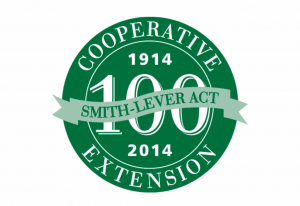 Celebrating a 100th anniversary is often an excuse to look back. But for the people behind Ohio State University Extension’s Family and Consumer Sciences programs, it’s a reason to look forward.
Celebrating a 100th anniversary is often an excuse to look back. But for the people behind Ohio State University Extension’s Family and Consumer Sciences programs, it’s a reason to look forward.
On May 8, 1914, the U.S. Congress passed the Smith-Lever Act establishing the nation’s Cooperative Extension Service, a unique educational partnership between the U.S. Department of Agriculture and the nation’s land-grant universities. The act created a network of Extension educators who bring university-based research and learning opportunities to the people, thanks to the cooperative support of county governments paired with university and federal funding.
Over the years, Extension organized itself by offering programming in four areas: agriculture and natural resources, including yard care and gardening; community development; youth development through the extensive 4-H program; and family and consumer sciences.
“Family and Consumer Sciences has always been rooted in what has been needed in society,” said Karen Bruns, OSU Extension assistant director in charge of FCS programs. “For example, early in Extension’s years, we were doing a lot of programming around canning and food preservation, but that was a result of World War I and the fact that we needed to make sure no food was going to waste as a way to support our troops in Europe.
“Today, we also do nutrition, food preservation and food safety programs, but now they’re tied to helping people maintain a healthy weight, gain more control over the food they eat, and participate more fully in the local foods movement.
What we’ve always done in Family and Consumer Sciences has been to look at what individuals, families and society needed regarding nutrition, family finances, and child development and relationships, and draw upon research and some very strong skills to meet those needs.
In addition, the methods Extension uses to reach Ohio’s families continues to evolve. In earlier days, Extension relied almost exclusively upon face-to-face contact and paper-based publications.
“Today, we still offer in-person programs, but we also make extensive use of social media,” Bruns said. YouTube videos, blogs, e-challenges, Facebook pages and Twitter feeds all help educators reach a wide audience. For example, more than 1,600 people participated in the program’s November 2013 Live Healthy, Live Well wellness challenge, centered around twice-a-week educational email messages, Bruns said. “This is more people than we could have reached 100 years ago in a series of six-week classes.
“The whole social media piece is an important part of our programming, because what we do in Extension is not about the one-day workshop or the three-week course. It’s about a continual connection to help individuals and families understand more about nutrition, finances and relationships, and how they impact the quality of life.”
Extension’s role in providing this type of information is especially important today, Bruns said, “because it allows us to connect with people when they are ready to learn, and because the topics we focus on have such a presence on the web.
“The difference that we offer is that we provide a reliable source when people are ready, while helping them filter through the misinformation that’s out there. Extension is a source of information you can trust.”
In addition, OSU Extension’s network of state specialists, field specialists and county educators allows research and outreach efforts to gain direction from the communities Extension serves, Bruns said.
“Knowledge isn’t only born at the university,” she said. “Communities have a wealth of knowledge. What happens with Extension is we combine that laboratory knowledge with knowledge in the community, and by blending it together, our knowledge is much richer and can have more of an impact on society.”
Although it’s nice to celebrate Extension’s 100th anniversary, Bruns said, “What’s important is the next 100 years, the challenges that individuals and families will face and how we can help them move forward. Our whole goal is to strengthen people and families no matter what issues they’re dealing with.”
Today’s focus on helping families with childhood obesity might morph into more holistic programs on nutrition and overall health. Finance programs in recent years that helped families prevent or deal with foreclosures could veer more toward understanding different options for savings and investment, or assisting people in figuring out the best health insurance options.
“Our programs are continually changing to meet the needs of Ohioans,” Bruns said. “And that really hasn’t changed for our entire history.”

